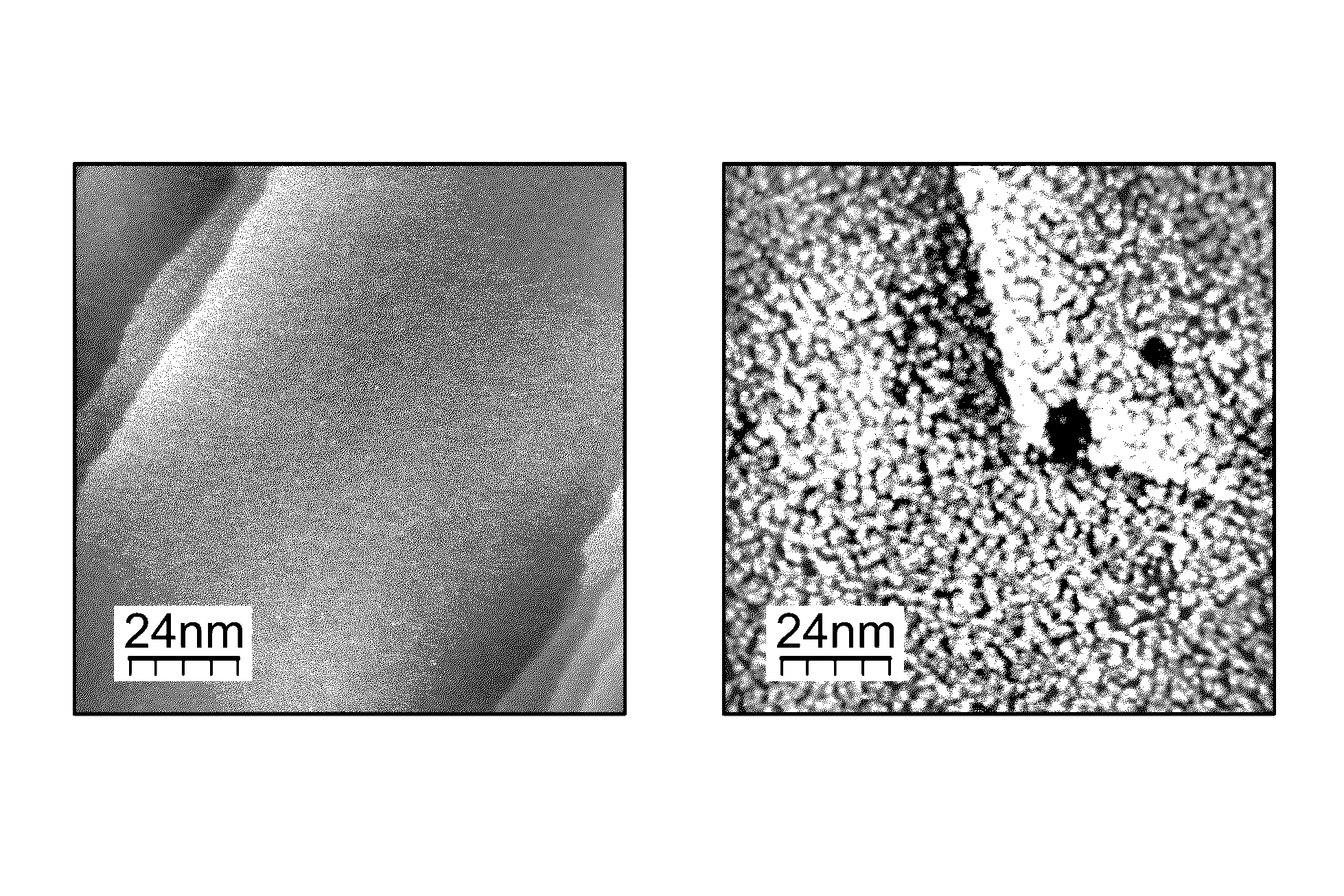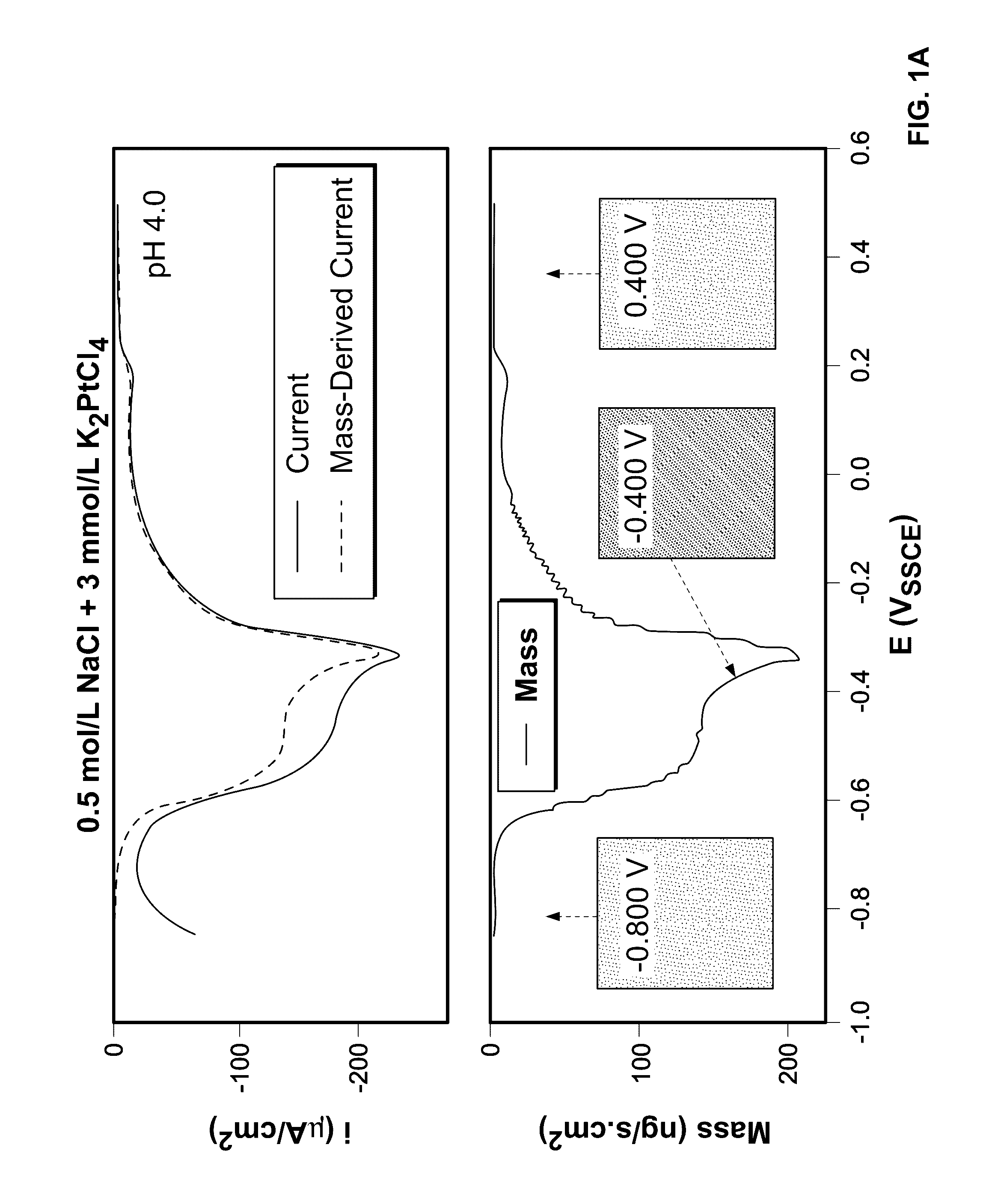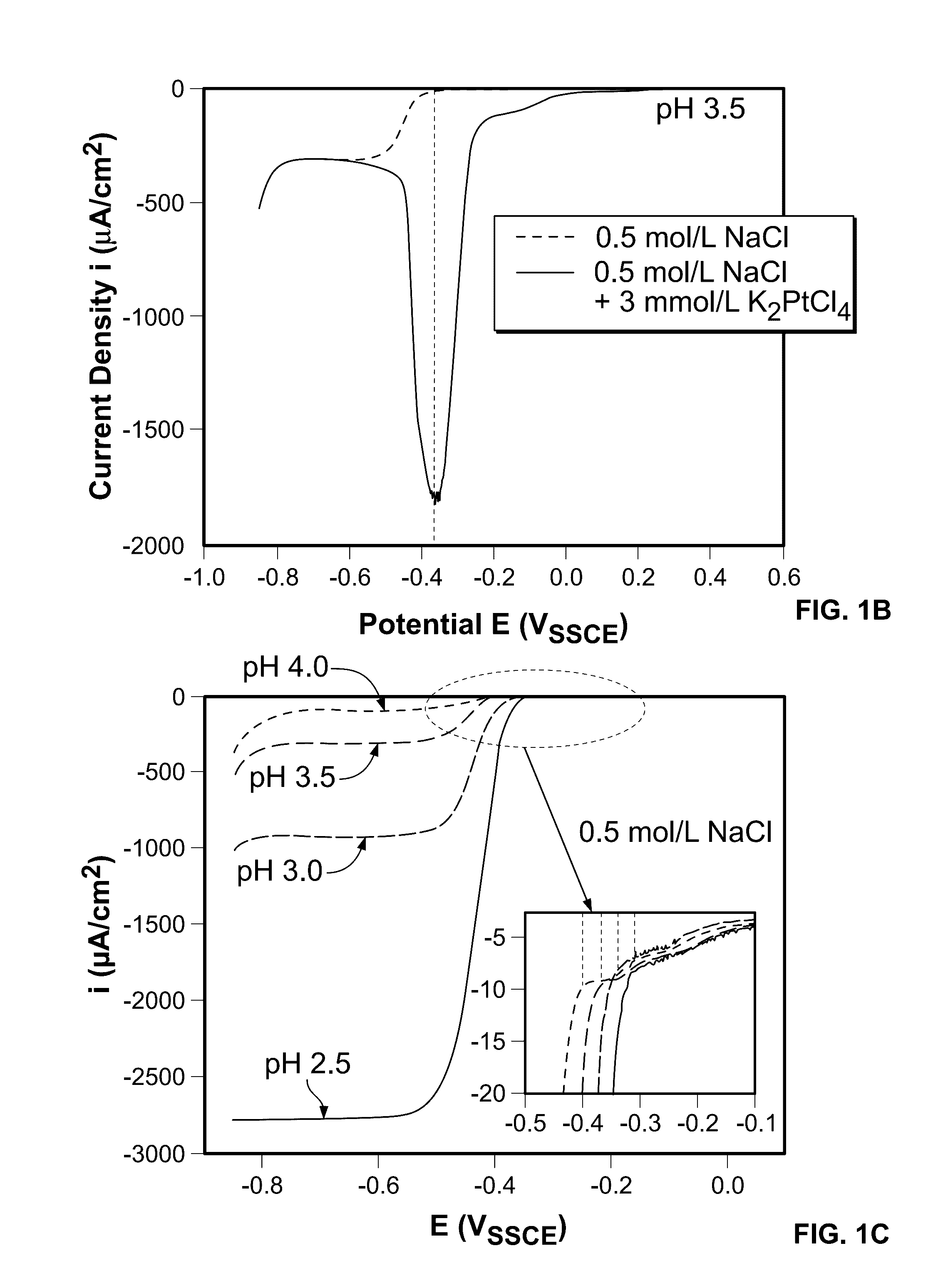Self-terminating growth of platinum by electrochemical deposition
a technology of electrochemical deposition and self-termination, which is applied in the field of electrochemical deposition, can solve the problems of non-trivial two-dimensional deposition, limited use in the development of alternative energy conversion systems such as low temperature fuel cells, and partial platinum monolayer coverage in the two-dimensional growth regim
- Summary
- Abstract
- Description
- Claims
- Application Information
AI Technical Summary
Benefits of technology
Problems solved by technology
Method used
Image
Examples
Embodiment Construction
[0030]A process is described for self-terminating growth of platinum or related platinum transition metal alloys by electrochemical deposition. The platinum transition metal alloys may include Ni, Co, Fe, Cu, Pb, Ru, Ir, etc. Platinum or platinum alloy monolayers grown using this self-terminating process are also described herein. In accordance with the present disclosure, it is shown that formation of a saturated underpotential deposited hydrogen layer and its effect in the electrical double layer may exert a remarkable quenching or self-terminating effect on platinum deposition, restricting it to a high coverage of two-dimensional platinum islands. When repeated, by using a pulsed potential waveform to periodically oxidize the underpotential deposited hydrogen layer, sequential deposition of platinum or platinum alloy layers may be achieved. A potentiostat and wave form generator maybe used to control and implement the potential waveform. Convolution with the electrochemical cell ...
PUM
| Property | Measurement | Unit |
|---|---|---|
| reversible hydrogen electrode potential | aaaaa | aaaaa |
| pH | aaaaa | aaaaa |
| current efficiency | aaaaa | aaaaa |
Abstract
Description
Claims
Application Information
 Login to View More
Login to View More - R&D
- Intellectual Property
- Life Sciences
- Materials
- Tech Scout
- Unparalleled Data Quality
- Higher Quality Content
- 60% Fewer Hallucinations
Browse by: Latest US Patents, China's latest patents, Technical Efficacy Thesaurus, Application Domain, Technology Topic, Popular Technical Reports.
© 2025 PatSnap. All rights reserved.Legal|Privacy policy|Modern Slavery Act Transparency Statement|Sitemap|About US| Contact US: help@patsnap.com



